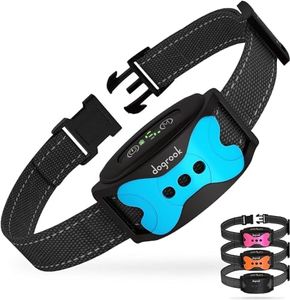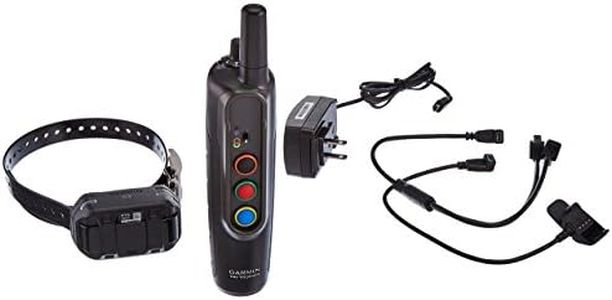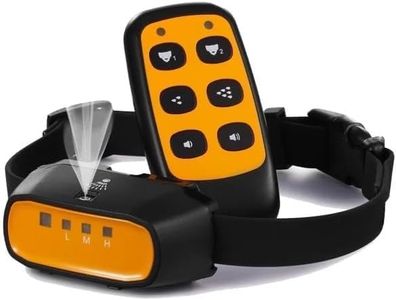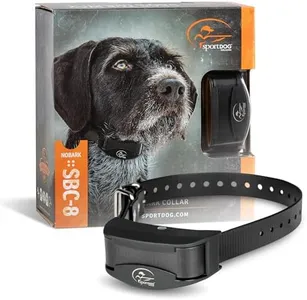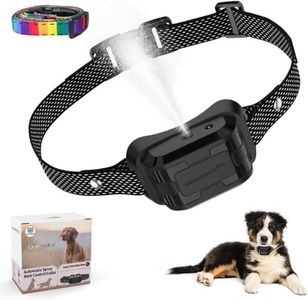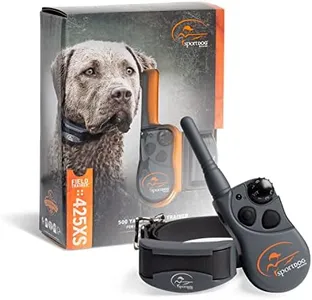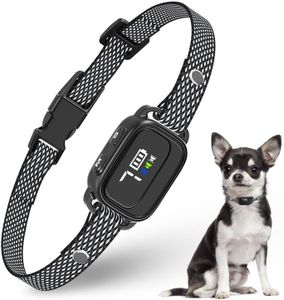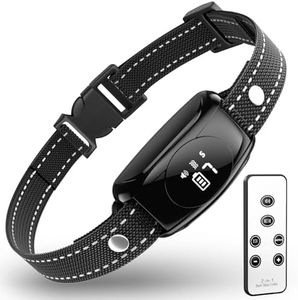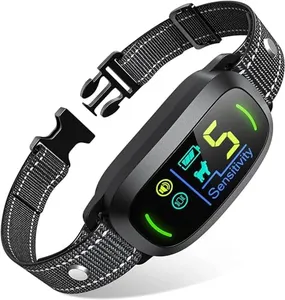We Use CookiesWe use cookies to enhance the security, performance,
functionality and for analytical and promotional activities. By continuing to browse this site you
are agreeing to our privacy policy
10 Best Bark Collars
From leading brands and best sellers available on the web.Buying Guide for the Best Bark Collars
Choosing a bark collar for your dog is a decision that requires understanding your dog's needs and behavior. Not all collars are suitable for every dog or every situation, so it's important to know what features to look out for and how each type works. The goal is to use a collar that effectively minimizes unwanted barking without causing harm or unnecessary stress to your pet. Always remember to use bark collars as a part of a broader training approach, rather than the sole solution to behavioral issues.Correction TypeThis refers to how the collar delivers feedback to deter barking. Correction types include sound, vibration, spray, or mild static stimulation. Sound and vibration are gentler, suitable for sensitive or smaller dogs, while spray (usually citronella) interrupts barking with a burst of scent. Static stimulation is stronger, intended for stubborn barkers but can be controversial. Choose the correction type based on your dog's size, temperament, and sensitivity—gentler types for mild barkers or nervous pets, stronger corrections only for dogs who don’t respond to other methods.
Sensitivity LevelsSensitivity levels determine at what bark volume or vibration the collar activates. Adjustable sensitivity lets you fine-tune the collar to respond only at the right barking intensity, avoiding false triggers from other noises or dogs. Higher sensitivity is best for quieter or smaller dogs, while lower sensitivity works for louder or more robust barkers. Pick a collar with multiple sensitivity levels if your dog lives in a noisy environment or if you want flexibility as your training progresses.
Fit and SizeFit and size concerns the physical dimensions and weight of the bark collar. Collars come in sizes tailored to small, medium, or large dogs. Getting the right fit ensures comfort, safety, and effectiveness. A collar that’s too loose won’t work properly, while one that’s too tight could injure your dog. Measure your dog’s neck and check the recommended weight range for the collar to make sure it’s appropriate for your pet’s breed and build.
Battery Life and Power TypeThis specifies how the collar is powered—rechargeable batteries, replaceable batteries, or even solar for some models. Longer battery life means less frequent charging or battery changes and more reliable correction when needed. For active dogs or busy owners, a rechargeable collar with a long-lasting battery is more convenient. If you don’t want to worry about recharging, models with replaceable batteries may suit your routine, but you’ll need to keep replacements on hand.
Water ResistanceWater resistance tells you whether the collar can withstand rain, splashes, or even being submerged. If your dog spends a lot of time outdoors or enjoys water play, go for a waterproof collar to ensure consistent operation and durability. Water-resistant collars are suitable for everyday use in light rain or damp conditions. Always match the water resistance to your dog’s lifestyle to avoid damage and potential malfunctions.

